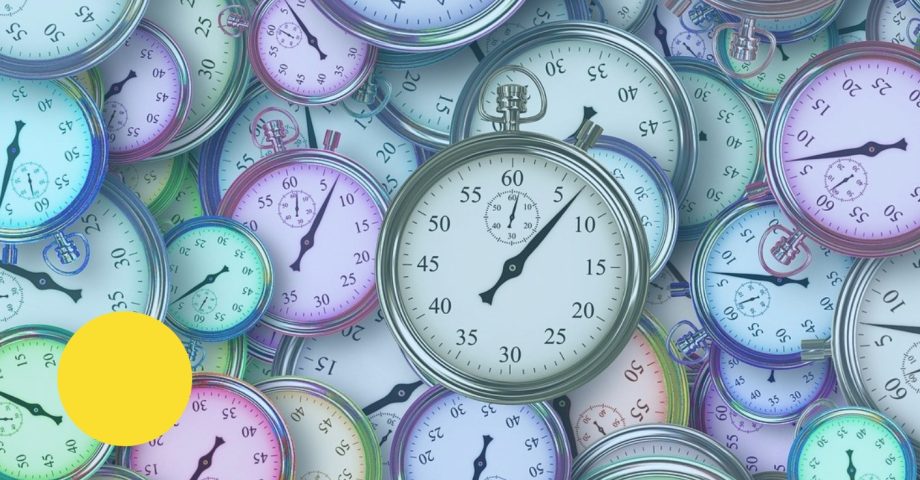Last Updated on September 19, 2023
You’ve decided to cut back on your drinking, but this has proven to be more challenging than you anticipated.
Drinking can be a hard habit to alter because of how alcohol affects us. Research has shown that alcohol can change a person’s emotional state by inducing feelings of pleasure and relaxation and reducing tension and anxiety [1].
This happens because drinking alcohol can release endorphins, or “pleasure” hormones, which evoke a feel-good effect. Because of this, some people find they’re happier, less stressed, and more sociable after drinking.
Cutting back on alcohol can also prove challenging because some individuals drink out of habit. Perhaps you reach for a bottle of wine to unwind before bed. Maybe you’re used to pairing your evening meals with a couple of glasses of alcohol. You might find yourself stuck in a rut trying to break these habits.
When your alcohol cravings hit, resisting the urge to drink can take a lot of willpower. We’ll discuss the various strategies you can utilize to address your alcohol cravings and tilt the scale in your favor.
Learn tips for delaying alcohol cravings10 Effective Ways to Manage Alcohol Cravings
Here are 10 effective ways to delay, control, and prevent alcohol cravings.
Pinpoint and limit your triggers
Research has shown that numerous situations can trigger alcohol cravings. This includes being at a restaurant, bar, pub, or at home and drinking on the weekends or with friends. Emotional states, such as anxiety, sadness, tension, irritability, and frustration, are also strongly linked to the urge to drink [2].
Here’s a list of some of the most common drinking triggers. Go through the list and reflect on whether any of these apply to you.
- Feeling stressed or anxious
- To relax, unwind, or celebrate
- Peer pressure and the need to fit in
- To feel more confident and comfortable in a social setting
- To sleep better at night
- Boredom or drinking alone out of habit
A person’s drinking triggers may involve anything from emotions and habits to places, sounds, and smells.
After identifying your triggers, find strategies to limit or minimize your exposure to them. The following are some examples:
- You always drink at a specific restaurant: Choose another restaurant that does not serve alcohol, or ask the restaurant if they serve a non-alcoholic version of your favorite drink.
- You pass by your favorite bar every day after work: Change up the commute route from your workplace, if possible.
- You often drink with the same group of friends: Suggest different activities or hangout spots that don’t involve drinking. Let your friends know about your new wellness goals and drinking limit.
Limiting your exposure to personal triggers can help prevent or delay alcohol cravings.
Plan ahead and set a predetermined drinking limit
Having an action plan and goal in mind sets up a mental barrier that may help to curb your drinking. Give yourself a drinking limit before heading to events where alcohol takes center stage. Write those limits down. You may even enlist the help of a trusted friend or family member to keep you accountable.
Your drinking limits may be defined by the following parameters:
- How much you’re allowed to drink
- What time you should stop drinking
- What days are dry days
- What kind of alcohol you’re allowed to drink
You can also decide how these limits may change over time. For example, you’ll cut back on half a glass of wine each week until you hit your goal of 2 glasses of wine weekly.
Once you’ve determined your limits, make it a point to track your drinking. A notepad or smartphone app can help you record how much alcohol you have. Sunnyside is one such mindful drinking app that allows and reminds you to track your daily alcohol intake.
Build your own mindful drinking plan in minutesPreoccupy yourself
Does the urge to drink hit whenever you’re relaxing and bored?
You might be able to avoid pubs and restaurants, but you certainly won’t be able to stay away from your couch. Whether you drink absentmindedly while binge-watching a movie series or turn to alcohol in response to loneliness, it’s important to address your drinking habits at home.
Try to actively keep your mind occupied. You could pursue a new hobby, learn a foreign language, and work on skills like cooking. Playing video games or reading a book are other examples of activities to do. By stifling boredom, you may prevent or delay your alcohol cravings.
Build a stress-management plan
Stress is one of the biggest drinking triggers. Many people turn to alcohol to remedy their anger, tension, or frustration. Research has shown that alcohol and stress share a bidirectional relationship, where stress increases drinking, and drinking also increases stress [3].
Because alcohol is an unhealthy coping mechanism, it’s crucial to have structures in place that prevent you from using it as an emotional crutch.
Build a stress management routine consisting of activities that can help you calm down and reduce tension. Examples include reading, taking a hot shower, practicing yoga, or knitting. Other examples include spending time with people you love or taking a walk in nature to cool off.
Learn skills to be a better drinkerForm a bedtime routine
Studies have found that alcohol may increase sleepiness momentarily. Once these effects wear off, alcohol causes the person to wake up more often throughout the night and reduces the overall duration and quality of sleep [4].
Winding down before bed is a good practice, but you’ll need to find healthier ways to do this. Instead of drinking, try performing breathing exercises, listening to soothing music, or having a hot drink before bed to put yourself in a relaxed and sleepy mood. By replacing drinking with another activity before bed, you can curb your nighttime alcohol cravings.
If you have persistent insomnia or sleeping problems, it’s best to seek professional help and advice. Your doctor may be able to recommend medications, supplements, or therapy to alleviate your symptoms.
Distract yourself when the urge hits
Create a list of positive distractions that you can turn to occupy your energy, thoughts, and mind when alcohol cravings hit.
Give your body at least 30-40 minutes to surf the urge until it tides over. Reading a book, going for a walk, calling a friend, or heading to the gym are some ways to distract yourself from drinking. You can carry these activities out back-to-back to ensure that you have enough time to overcome your cravings.
Practice mindfulness
Mindfulness encourages you to reflect on how much and why you drink.
The next time your alcohol cravings pay a visit, ask yourself whether you really need that glass of wine. Remind yourself of the goals you’ve set and the purpose behind them—whether that’s to lose weight, save money, or simply improve your wellness. Understand that these cravings do come, but they will also pass without you giving in to them.
If you’re at a party, event, or celebration, ground yourself in the present moment. Enjoy the music, laughter, food, company, and conversations, and learn how to have fun without alcohol in the mix.
Take a 3-min quiz to learn your drinking habitsLearn how to say “no”
Consider letting your friend group know if you’ve decided to scale back on unhealthy drinking habits. According to research, being peer-pressured into drinking happens to adults across different age groups [5]. And sometimes, being pressured into drinking might be disguised as a kind and sweet gesture or request.
Tell your drinking buddies that you intend to cut back. Let them know your limits, and don’t hesitate to give a firm “no” if one too many drinks are being offered. Other ways to reject a drink include changing the subject or coming up with a valid reason or excuse to avoid drinking (e.g., having to drive home or attend a meeting early the next day).
Find a supportive community
Having friends with the same mindset and goals is a fantastic way to boost your progress and morale as you cut back on your alcohol intake. With a quick search online, you can find numerous communities and support groups for people who wish to foster a healthier relationship with alcohol.
These groups are a great place to connect with people who will keep you accountable, give helpful advice, and encourage you throughout your mindful drinking journey. You can also participate in challenges like Dry January or Sober October with a community or group of friends.
Connect with a coach or therapist
If you’re having difficulty cutting back on your alcohol intake, consider seeking help from a trained professional.
A coach or therapist can help you identify unhealthy thinking patterns and habits that promote excessive drinking. They’ll discuss your drinking habits with you, help you set goals, and devise structures to achieve them.
How Sunnyside Can Help You Manage Your Cravings
The Sunnyside app helps you set realistic goals and provides personalized action plans to achieve them.
You can track your drinking patterns and behaviors and visualize your progress throughout your mindful drinking journey. Through the app, you can also seek advice from real-life coaches on tackling your alcohol cravings. Sunnyside’s community is a welcoming and non-judgemental space where you can connect and grow with thousands of other people on the same journey as yourself.
Take the 3-minute quiz to see how you can get started!
References
[1] Gilman, J. M., Ramchandani, V. A., Davis, M. B., Bjork, J. M., & Hommer, D. W. (2008). Why we like to drink: a functional magnetic resonance imaging study of the rewarding and anxiolytic effects of alcohol. The Journal of neuroscience : the official journal of the Society for Neuroscience, 28(18), 4583–4591. https://doi.org/10.1523/JNEUROSCI.0086-08.2008
[2] Ghiţă, A., Teixidor, L., Monras, M., Ortega, L., Mondon, S., Gual, A., Paredes, S. M., Villares Urgell, L., Porras-García, B., Ferrer-García, M., & Gutiérrez-Maldonado, J. (2019). Identifying Triggers of Alcohol Craving to Develop Effective Virtual Environments for Cue Exposure Therapy. Frontiers in psychology, 10, 74. https://doi.org/10.3389/fpsyg.2019.00074
[3] Russell, M. A., Almeida, D. M., & Maggs, J. L. (2017). Stressor-related drinking and future alcohol problems among university students. Psychology of addictive behaviors : journal of the Society of Psychologists in Addictive Behaviors, 31(6), 676–687. https://doi.org/10.1037/adb0000303
[4] Park, S. Y., Oh, M. K., Lee, B. S., Kim, H. G., Lee, W. J., Lee, J. H., Lim, J. T., & Kim, J. Y. (2015). The Effects of Alcohol on Quality of Sleep. Korean journal of family medicine, 36(6), 294–299. https://doi.org/10.4082/kjfm.2015.36.6.294
[5] Morris, H., Larsen, J., Catterall, E., Moss, A. C., & Dombrowski, S. U. (2020). Peer pressure and alcohol consumption in adults living in the UK: a systematic qualitative review. BMC Public Health, 20(1). https://doi.org/10.1186/s12889-020-09060-2



